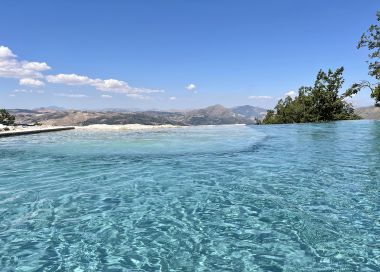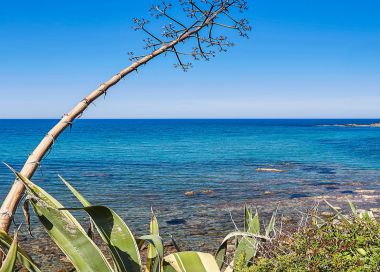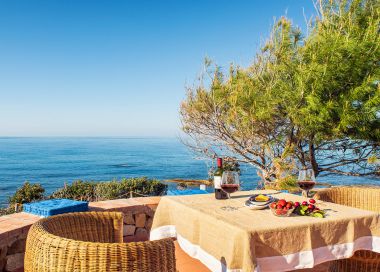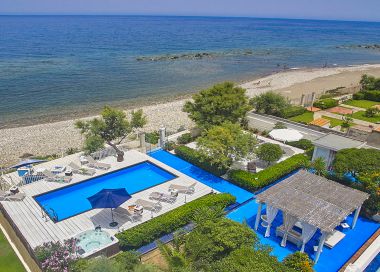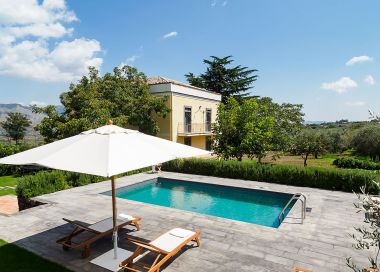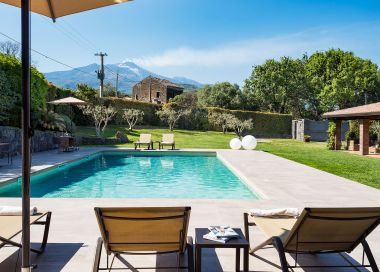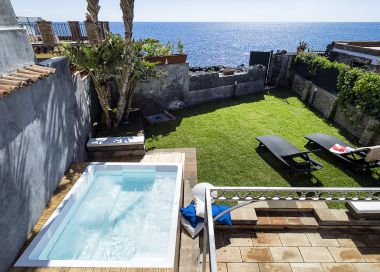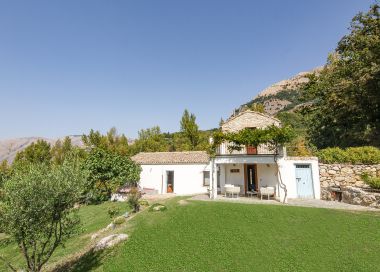Petralia Soprana the stone village
Petralia Soprana, the unspoilt stone village over time
Petralia Soprana lies at the heart of Sicily, in the province of Palermo. Petralia Soprana is the highest village in the Madonie mountain range. It dominates over a broad landscape that embraces the snowy summits of Mount Etna, the mountains around the region of Palermo, and the wide valleys and rivers of the surrounding countryside. The view from up the Petralia plateau stirs intense emotions, especially during those days when layered clouds at low altitude offer a series of uplifting landscapes and tinted sunsets. A site of great importance during the Greek and Carthaginian domination, Petralia was the first Sicilian centre to fall under the control of the Romans. Named “Petra” by the Romans, it was one of the sites that provided the largest quantities of wheat to the Roman Empire. Following the Arab conquest, its name changed into “Batraliah” and Petralia later became a potent stronghold during the Norman period. The village still maintains its original urban medieval structure today, with its narrow paved roads, its churches and aristocratic palazzi, its attractive courtyards and its linear brick houses that open up to charming little squares and splendid views. Petralia Soprana stands outside the ordinary tourist itineraries and seems nowadays to “survive by itself,” assuming more and more the character of a “living Christmas crib.” These characteristics make it an exclusive and fascinating destination, and that is why attentive and informed visitors prefer it to other holiday sites: they want to explore ancient and forgotten places like this that have strongly contributed to the history of Sicily. A scrupulous visit to Petralia will allow you to savour its beauty from within, perhaps through the visit (with a bit of audacity and luck) of one of its grandiose aristocratic palazzi that hide several masterpieces within their walls, the results of human talent and craft. The village is rich in monuments and churches of great architectural interest such as:
The Chiesa Madre, built in the fifteenth century, reflects the principles of medieval architectural culture, displaying an extremely simple but rigorous profile. Dedicated to Saint Peter and Saint Paul, the Chiesa Madre overlooks a beautiful square with a sixteenth century portico counting 18 paired slender columns, sculptured by Giuseppe and Giacomo Serpotta. Inside the church is Fra’ Umile Pintorno’s (1580-1639) first crucifix. Pintorno was the sculptor of numerous crucifixes figuring in many Sicilian churches. From the portico you can enjoy scenic views over the villages of Piano Battaglia and Polizzi Generosa, over the city of Enna and Mount Etna.
The Church of Santa Maria di Loreto was built in the seventeenth century and then rebuilt in 1750. It is perched on the remains of a Saracen castle and its baroque facade is enclosed within two impressive bell towers with brightly coloured spires gleaming under the sunlight. The shape of the church is almost circular, built on a Greek cross plan and rich in stucco with golden flowers and leaves that rise toward a light dome, sustained by four pillars. You can also admire a marble panel from the fifteenth century attributed to Domenico Gangi. Valuable paintings, seventeenth century frescoes and precious period vestments enlighten the sacristy. A charming view opens up on the valley at the back of the church. Still today Petralia operates one of the richest salt deposits in Europe: an enormous lens of rock salt contained in the heart of the mountain rising up to 1,100 metres above sea level. More than 40 km of tunnels unravel underground, where all the working process – from extraction to packing – takes place. A ventilation circuit creates a safe and comfortable enviroment underground. The salt of Petralia is by nature of a special and unique quality. The salt mines can be visited upon request by calling the Petralia Soprana’s town hall. Another of Petralia’s “gems” is the Adventure Park, an adventure trail among the woods that is not just for children! The village celebrates several festivals and recurring events, such as for instance: the "Sagra del Salgemma" (“Salt festival” happening on the last Sunday of August) and the “Matrimonio Baronale” (15th August), a historical commemoration of the aristocratic wedding through seventeenth century costumes, figuring richly dressed ladies, with horses and knights parading through the ancient roads towards the lovely Piazza Duomo. The nuptial ceremony culminates with the spectacular dance “Ballo della Cordella,” and the game “Giostra degli Stendardieri.”
The Chiesa Madre, built in the fifteenth century, reflects the principles of medieval architectural culture, displaying an extremely simple but rigorous profile. Dedicated to Saint Peter and Saint Paul, the Chiesa Madre overlooks a beautiful square with a sixteenth century portico counting 18 paired slender columns, sculptured by Giuseppe and Giacomo Serpotta. Inside the church is Fra’ Umile Pintorno’s (1580-1639) first crucifix. Pintorno was the sculptor of numerous crucifixes figuring in many Sicilian churches. From the portico you can enjoy scenic views over the villages of Piano Battaglia and Polizzi Generosa, over the city of Enna and Mount Etna.
The Church of Santa Maria di Loreto was built in the seventeenth century and then rebuilt in 1750. It is perched on the remains of a Saracen castle and its baroque facade is enclosed within two impressive bell towers with brightly coloured spires gleaming under the sunlight. The shape of the church is almost circular, built on a Greek cross plan and rich in stucco with golden flowers and leaves that rise toward a light dome, sustained by four pillars. You can also admire a marble panel from the fifteenth century attributed to Domenico Gangi. Valuable paintings, seventeenth century frescoes and precious period vestments enlighten the sacristy. A charming view opens up on the valley at the back of the church. Still today Petralia operates one of the richest salt deposits in Europe: an enormous lens of rock salt contained in the heart of the mountain rising up to 1,100 metres above sea level. More than 40 km of tunnels unravel underground, where all the working process – from extraction to packing – takes place. A ventilation circuit creates a safe and comfortable enviroment underground. The salt of Petralia is by nature of a special and unique quality. The salt mines can be visited upon request by calling the Petralia Soprana’s town hall. Another of Petralia’s “gems” is the Adventure Park, an adventure trail among the woods that is not just for children! The village celebrates several festivals and recurring events, such as for instance: the "Sagra del Salgemma" (“Salt festival” happening on the last Sunday of August) and the “Matrimonio Baronale” (15th August), a historical commemoration of the aristocratic wedding through seventeenth century costumes, figuring richly dressed ladies, with horses and knights parading through the ancient roads towards the lovely Piazza Duomo. The nuptial ceremony culminates with the spectacular dance “Ballo della Cordella,” and the game “Giostra degli Stendardieri.”





